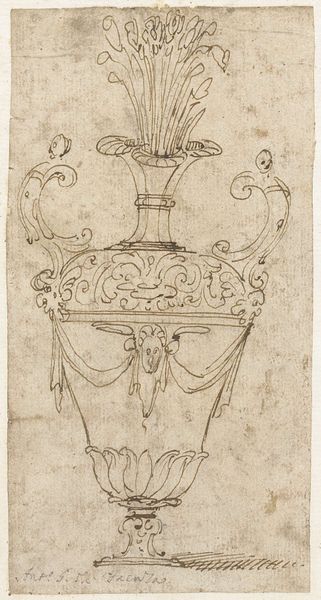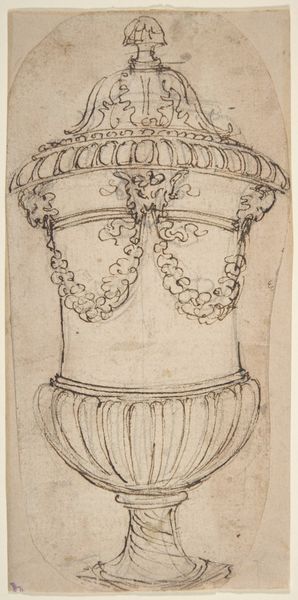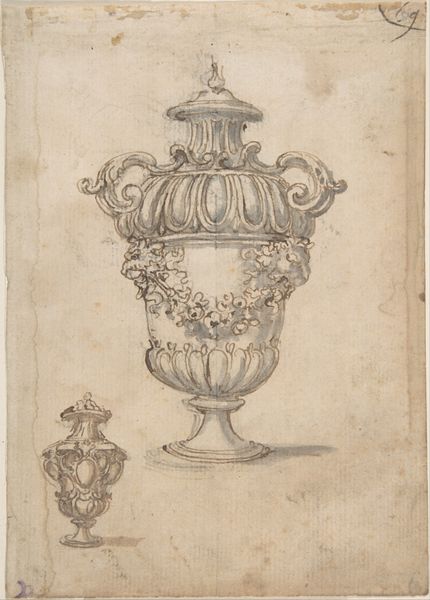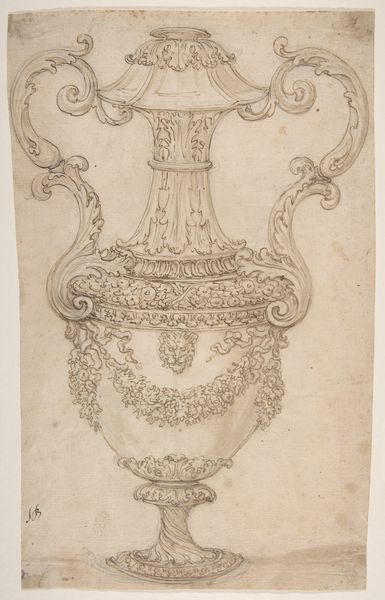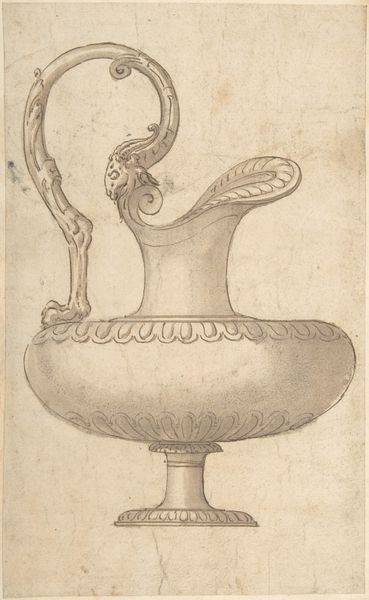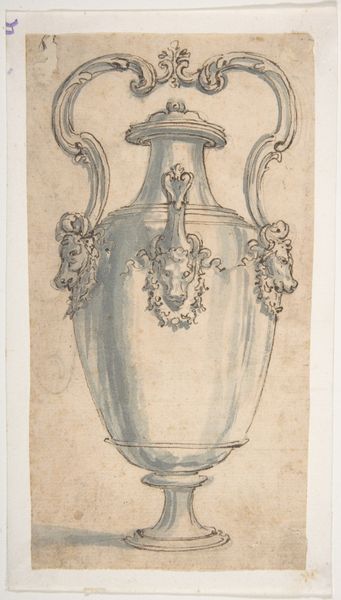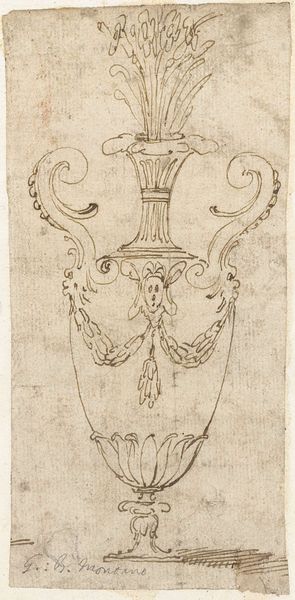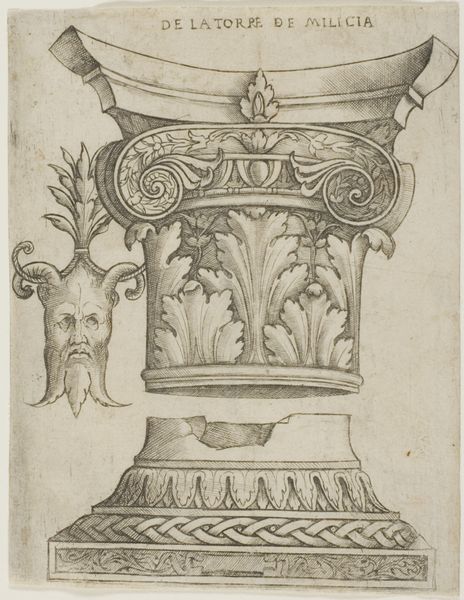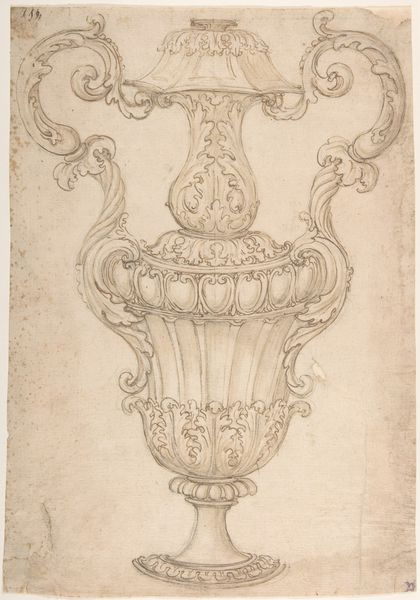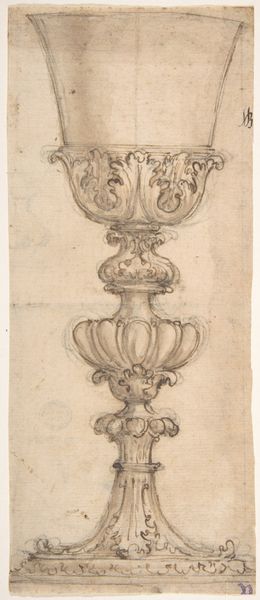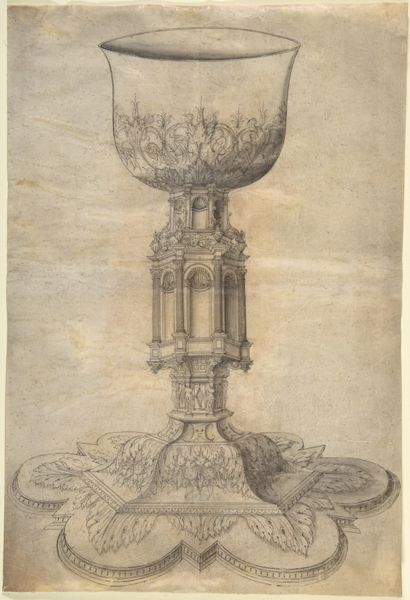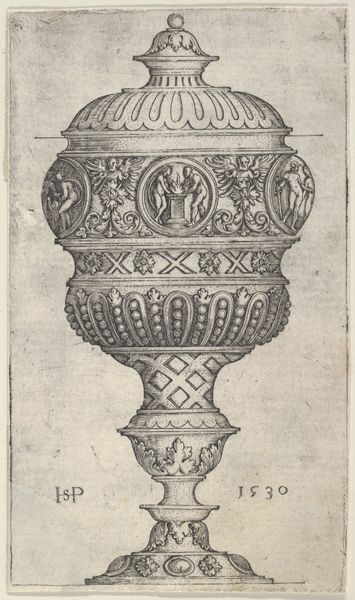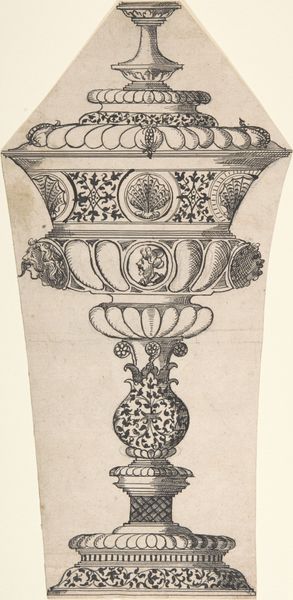
Siervaas met over de buik slingers en mascarons 1544 - 1621
0:00
0:00
drawing, paper, ink
#
drawing
#
mannerism
#
paper
#
form
#
ink
#
geometric
#
pen-ink sketch
#
line
#
sketchbook drawing
Dimensions: height 153 mm, width 80 mm
Copyright: Rijks Museum: Open Domain
Curator: This ink drawing on paper, titled "Siervaas met over de buik slingers en mascarons," offers an intriguing glimpse into the Mannerist style. It was created sometime between 1544 and 1621 by Giovanni Battista Montano. Editor: Immediately, I'm struck by the linearity of the work. The thin, almost hesitant lines give the vase a delicate, ethereal quality. It feels more like a suggestion of form than a definitive depiction. Curator: That delicacy reflects the period. Montano was fascinated by classical antiquity, and his drawings often served as models for other artists and artisans seeking to revive classical forms in a contemporary context. He helped to fuel this classical revival movement. Editor: I see the classical influence, certainly, but there's also something quite quirky about the mascarons. Their placement and design seem intentionally disruptive, adding a touch of playful asymmetry to what would otherwise be a strictly ordered composition. It reminds me of Mannerism's love for artifice. Curator: Exactly! These kinds of ornamental flourishes and grotesque masks were popular during the late Renaissance. This wasn't simply about copying antiquity; it was about adapting it, imbuing it with new meanings and appealing to a refined and elite viewership. The presence of these details indicates a shift away from the ideals of the High Renaissance. It points to an environment ripe with humanist intellectualism and changing values within artistic institutions. Editor: I'm also intrigued by the negative space. The stark contrast between the delicate ink lines and the bare paper emphasizes the volume and presence of the vase, paradoxically creating a sense of weight through absence. It almost suggests incompleteness. Curator: It may have been a preparatory drawing; a sketch. But beyond its immediate function, this drawing serves as a valuable document, reflecting shifts in aesthetic tastes, workshop practices, and the evolving role of art within society during the late Renaissance. It exemplifies how artistic expression became interwoven with intricate societal and cultural nuances. Editor: A captivating example, and I appreciate how looking closer lets you discern these intentional elements within the work. It leaves me thinking differently about the choices artists make within what might seem like the simplest compositions.
Comments
No comments
Be the first to comment and join the conversation on the ultimate creative platform.
